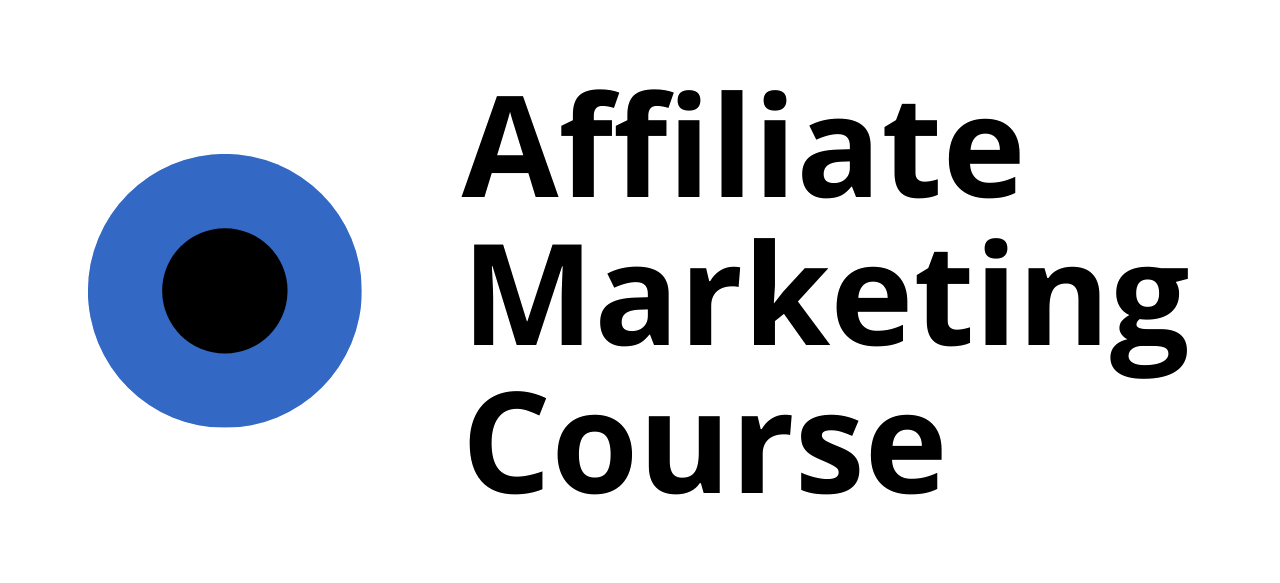Starting your affiliate marketing journey requires a well-thought-out budget to navigate the initial setup, content creation, marketing efforts, and ongoing learning. Here’s a structured breakdown to guide your financial planning:
- Website Setup: Allocate approximately $30-$50 per month for hosting services, including domain registration ($10-$15) and selecting a suitable CMS like WordPress. Consider additional costs for themes and plugins to enhance functionality.
- Content Creation Tools: Invest in essential tools such as a decent camera ($500-$1500) and video editing software like Adobe Premiere Pro or Final Cut Pro ($200-$400 annually). Basic writing tools may suffice initially, but upgrading could enhance content quality.
- Marketing Budget: Begin with a modest allocation for Google Ads or social media ads, aiming for $100-$300 monthly. Focus on one platform initially to maximize ROI before expanding.
- Audience Building: Utilize free methods like SEO and social media to organically grow your audience. Consider paid traffic as a supplementary strategy after establishing some traction.
- Continuous Learning: Prioritize valuable resources such as courses or newsletters. Allocate $50-$200 annually for staying updated on industry trends and effective strategies.
- Legal Compliance: Incorporate disclaimers and transparency in your affiliate relationships to maintain trust and avoid penalties, ensuring regulatory compliance without direct financial costs.
- Testing and Adjustment: Set aside 10-20% of your budget for experimenting with new strategies and adjusting your approach based on performance data.
By carefully allocating funds across these categories and regularly reviewing your expenses and results, you can build a sustainable affiliate marketing business without overspending.
Key Takeaways
– Understand Variable Costs: Learn how expenses like domain names, hosting, and website development vary based on your goals and platform choices.
– Initial Setup Costs: Expect to spend $10–$50 on a domain name, $10–$30/month on shared hosting, and up to $500+ for dedicated servers or custom website development.
– Traffic Generation Costs: Drive targeted traffic with Google Ads ($1–$3/click), social media ads ($0.01–$2/CPE), and email marketing ($10–$300/month).
– Content Creation Expenses: Allocate funds for hiring writers ($30–$150/article), design tools ($12–$20/month), video editing software ($15–$100/month), and virtual assistants ($500–$2000/month).
– Commission Fees: Expect to pay 10%–30% of your revenue (average 15%–20%) to affiliate networks.
– Ongoing Costs: Invest in tracking software ($10–$500/month), CRM systems ($25–$100/month), analytics tools ($50–$200/month), and legal fees ($500–$1500/year).
– Scale Wisely and Optimize: Start small, scale as you grow, and track expenses to maximize ROI.
– Potential Earnings: Entry-level affiliates earn $50–$200/month, intermediates $300–$2,000/month, and top-tier earners $2,000–$10,000+/month.
– High-Income Goals: Aim for $100k/month by selecting profitable niches, optimizing conversions, building a loyal audience, and staying compliant with legal standards.

How Much Money Do I Need for Affiliate Marketing?
Affiliate marketing costs can vary significantly based on your approach, goals, and scale. Here’s a breakdown of the key expenses you may encounter:
1. Website Setup
- Domain Name : Typically ranges from $10 to $70 annually, depending on the domain extension (.com,.net, etc.).
- Hosting : Hosting costs range from $10 to $200+ per year, depending on the hosting plan (shared, VPS, dedicated server).
- Content Management System (CMS) : Free options like WordPress are available, but premium themes and plugins may cost extra.
2. Traffic Generation
- Social Media Ads : Costs vary by platform and audience size. Expect to spend $500 to $2000+ per month for targeted campaigns.
- Google Ads : Pay-per-click (PPC) costs range from $0.10 to $3+ per click, depending on competition and niche.
- Organic Growth : Building an audience organically through content marketing and SEO can be free but requires time and effort.
3. Affiliate Networks
- Joining Programs : Most affiliate networks like Amazon Associates, ShareASale, and ClickBank are free to join, though they typically take a percentage of commissions (15-30%).
4. Content Creation Tools
- Design Software : Tools like Canva or Adobe Photoshop may cost $10 to $200+ annually.
- Editing Software : Video editing tools like Adobe Premiere Pro or Final Cut Pro range from $20 to $400+ annually.
5. Analytics & Tracking
- Tools : Google Analytics is free, but premium tools like SEMrush or Ahrefs cost $100+ per month.
6. Training & Courses
- One-Time Courses : Prices vary from free to several thousand dollars, depending on the course quality and duration.
Initial Setup vs. Ongoing Costs
- Initial Setup : Website setup and content creation tools may cost $300 to $1500+.
- Ongoing Costs : Monthly expenses for ads, hosting, and tools can range from $100 to $3000+, depending on scale and strategy.
Return on Investment (ROI)
- ROI can vary widely. Niches with higher conversion rates may yield quicker returns, while others might take longer. Setting realistic expectations and testing with a smaller budget can help optimize ROI.
Conclusion
Affiliate marketing is a scalable business model with variable costs. By balancing upfront investments in setup and ongoing expenses with strategic planning, you can navigate the financial aspects effectively.
Can you make $10,000 a month with affiliate marketing?
Yes, it’s possible to earn $10,000 or more monthly through affiliate marketing with consistent effort and strategic planning. Below are proven strategies to help you achieve this goal:
- Choose the Right Platform :
Start by selecting a reliable platform or course like AffiliateMarketingCourse.biz that offers comprehensive training and resources. This platform provides expert advice, strategies, and courses tailored for aspiring affiliate marketers. - Drive Targeted Traffic :
Focus on building a dedicated audience by creating valuable content around your niche. Share insights, tutorials, and reviews to attract engaged readers who are interested in your products or services. - Optimize Content for Conversions :
Craft high-quality articles, videos, and guides that solve your audience’s problems. Use clear CTAs (Calls to Action) to guide them toward purchasing products through your affiliate links. - Leverage Email Marketing :
Build an email list and send regular newsletters featuring exclusive deals, product launches, and updates. Personalized emails can significantly boost conversion rates and recurring commissions. - Stay Updated on Trends :
Keep an eye on industry changes and consumer preferences. Adapt your strategies to align with current trends, such as influencer marketing or mobile optimization, to stay competitive.
By implementing these steps and remaining committed to your goals, you can build a sustainable affiliate marketing business that generates substantial income. Remember to track your progress, analyze what works, and refine your strategies accordingly.

The 80/20 Rule in Affiliate Marketing
The 80/20 rule in affiliate marketing refers to the principle that 20% of your affiliate partners will account for 80% of your sales. This relationship highlights the importance of identifying and leveraging high-performing affiliates to maximize revenue.
- Focus on Top Performers: Identify the 20% of affiliates who consistently deliver the highest sales or conversions. These partners are often the most valuable assets for your affiliate program.
- Reward High Performers: Provide incentives or commissions to these top affiliates to motivate them to continue performing well. This can include cash bonuses, exclusive deals, or advanced marketing tools.
- Monitor Performance Regularly: Continuously track metrics like conversion rates, click-through rates, and sales to identify which affiliates are driving the most success. Adjust your strategy accordingly to optimize results.
- Expand Your Network Strategically: Once you’ve established a strong base of top performers, consider expanding your affiliate network to include additional partners without compromising the quality of your existing relationships. Optimize your recruitment process to attract similarly high-performing affiliates.
By applying the 80/20 rule, you can focus your efforts on the most profitable partnerships while still growing your affiliate program. This approach ensures that your program remains efficient and productive, ultimately leading to better outcomes for both you and your affiliates.
For more resources and strategies to enhance your affiliate marketing efforts, visit our affiliate marketing course platform. Our comprehensive guides and expert advice will help you master the 80/20 rule and other essential techniques for building a successful affiliate program.

How Much Should You Spend on Affiliate Marketing?
Affiliate marketing costs can vary widely depending on your goals, audience, and chosen platforms. Here’s a breakdown of the key expenses you should consider:
Website Setup Costs
- Domain Name: $10 – $50/year
- Hosting: $10 – $30/month (shared hosting); $100 – $500+/month (dedicated server)
- Website Development: Free (using templates) to $500+ (custom development)
Driving Traffic Costs
- Google Ads: $1 – $3/Click (varies by industry and competition)
- Social Media Ads: $0.01 – $2/Cost per engagement (depending on platform and targeting)
- Email Marketing: $10 – $300/month (depends on email list size and tools used)
Content Creation Costs
- Hiring Writers: $30 – $150/article (based on experience and niche)
- Design Tools (e.g., Canva): $12 – $20/month
- Video Editing Software: $15 – $100/month
- Virtual Assistant: $500 – $2000/month (for managing tasks)
Commission Fees
- Affiliate Networks: 10% – 30% of revenue (average 15%-20%)
Ongoing Costs
- Tracking Software: $10 – $500/month
- CRM System: $25 – $100/month
- Analytics Tools: $50 – $200/month
- Legal Fees (Contracts): $500 – $1500/year
Additional Considerations
These costs are estimates and may vary based on your specific strategy. Starting small and scaling as you grow is often recommended. Track your expenses closely and adjust your budget accordingly to maximize ROI.
Realistic Affiliate Marketing Salary
Affiliate marketing salaries vary significantly based on experience, traffic volume, niche, and the effectiveness of the affiliate programs chosen. Here’s a breakdown of the typical earning ranges:
- Entry-Level Affiliates: Earnings typically range from $50 to $200 per month. This is common among newcomers with a smaller audience base.
- Intermediate Affiliates: Earnings may increase to $300 to $2,000 per month. This level is achieved by building a moderate audience and improving conversion rates.
- Top-Tier Earners: High performers can earn $2,000 to $10,000+ per month. These affiliates often have substantial audiences and high engagement with their recommendations.
Earnings are influenced by factors such as traffic volume, engagement, niche specificity, and the commission structure of the affiliate programs. Consistent effort, quality content, and effective marketing strategies are essential for achieving higher earnings. As you grow your audience and expertise, your affiliate income can become a significant component of your revenue stream.

Can I Make $100k a Month with Affiliate Marketing?
Achieving $100k monthly through affiliate marketing is feasible but demands strategic planning and execution. Here’s a structured approach:
- Niche Selection: Target a profitable niche with high demand and less competition. Examples include tech gadgets (higher commission rates) or fitness equipment.
- Commission Rate: Opt for affiliate programs offering higher rates, ideally around 20%. Promoting high-ticket items can significantly boost earnings.
- Traffic Generation: Focus on driving targeted traffic through SEO, content marketing, and social media. Tools like Google Analytics can help track effectiveness.
- Conversion Optimization: Enhance conversion rates via persuasive content, optimized landing pages, and trustworthy affiliate links. Test different strategies for best results.
- Diversification and Monetization: Promote a mix of products for stability and focus on high-commission items for growth. Regularly analyze performance using analytics tools.
- Audience Building: Cultivate a loyal audience through consistent content creation and engagement. Set incremental goals for traffic and sales growth.
- Legal Compliance: Stay informed about regional regulations to adhere to legal standards in affiliate marketing.
- Networking and Learning: Engage with affiliate communities for insights and collaborate with influencers to explore new opportunities.
By aligning these elements effectively, achieving a $100k monthly income through affiliate marketing is achievable with dedication and strategic planning.




0 Comments